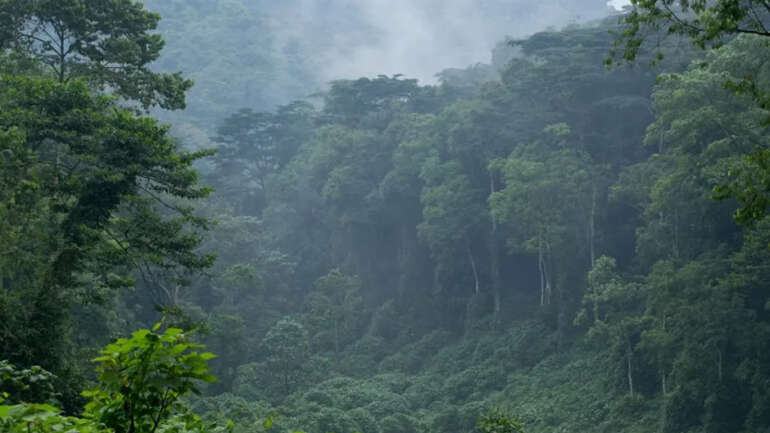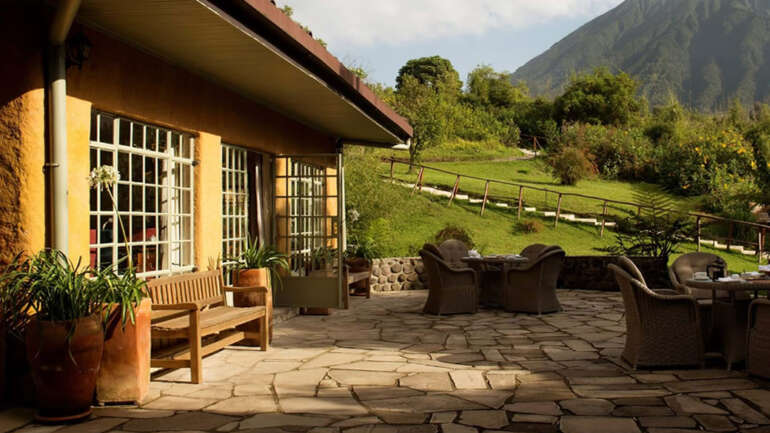Water is one of the most basic necessities of life, but something that many people struggle to find within the Virunga Landscape. Annual rainfall is plentiful but water sources are rare due to the volcanic geology that either forces rainwater to quickly runoff or infiltrate deeply.
The International Gorilla Conservation Programme (IGCP), as part of the EEEGL project has facilitated the construction of five communal rainwater harvesting systems and 30,000 liter tanks around Mgahinga Gorilla National Park in Uganda in order to bring that basic necessity closer to home and reduce the need for people to enter the park in search of it.
But the work did not start or stop with the tanks themselves. Just having the physical tanks doesn’t mean that they provide benefits equitably within the community, that is the job of the local water use committees that are charged with maintenance and governance of the tanks. The EEEGL project has invested heavily into the institutional development of these committees, as the approximately 2,400 beneficiaries of these five tanks depend on them.
A following post here on the EEEGL website will chronicle in detail one such training session conducted in Rwanda for the four communal tanks that were constructed there via IGCP and the EEEGL project.
Returning the focus to Uganda, the five community tanks are managed by five water use committees: each one of these is led by five representatives (43% of them are women). The water use committees are charged with collecting operation and maintenance funds for the tanks, maintaining the tanks in good working order, sensitize the communities on proper hygiene and sanitation and enforce the community water user bye-laws.
We see these initiatives as piloting the promotion of RWH technologies locally and catalyzing broader interest and commitment among the residents. Based on an assessment of community water needs, it is certain the current availability of water to beneficiaries is not sufficient, especially during the long dry season, which can last up to 90 days from the period between June-September. Therefore, the operation and maintenance funds that are collected are invested through a village and savings loan association (VSLA). The community expects that these funds will be used not only for maintenance of the tanks, but for the construction of other smaller tanks in the village to cater for the demand for water.
In Nzogera, 100 Shillings per jerrican are collected by the treasurer of the water use committee upon collection from the tank. There are caveats in the water use bye-laws for those members of the communities who cannot afford to pay the fee and each household is also restricted to no more than two jerricans (or 40 liters) per day. Given this restriction on quantity, the capacity of the tanks and the number of households in each community, we calculate that during the dry season the tanks, if full, can last from anywhere between four days (Nyagacence tank) to 18 days (Nkurungiro tank) if each household took their maximum allocation each day. For the Nzogera community, the duration of the tank is calculated at 10 days. In reality, not all households take advantage of the communal tanks every day and that there are welcome episodes of rain even during the dry season. Based on the dry season in 2010, the Nzogera tank retained water for almost three weeks.
Among the five tanks and five water use committees established in Uganda through the EEEGL project, the dire water needs of communities in this region were confirmed. To address this issue, EEEGL has further increased the capacity of the water use committees to not only maintain the tanks, but to use the tanks constructed through this project to facilitate further infrastructure development related to water. Relationships between the water use committees and the district authorities in charge of water development were also established. Further, IGCP has worked to support the development of masonry skills, especially through women’s groups, to facilitate the construction of household rainwater collection tanks, which can supplement the communal tanks.
IGCP will continue these efforts to improve water accessibility in the communities neighboring parks in the region, pulling from the lessons learned during the EEEGL project and guided by a recently-developed regional water strategy.

